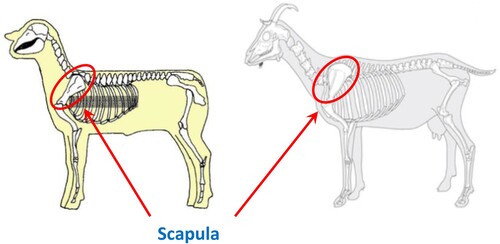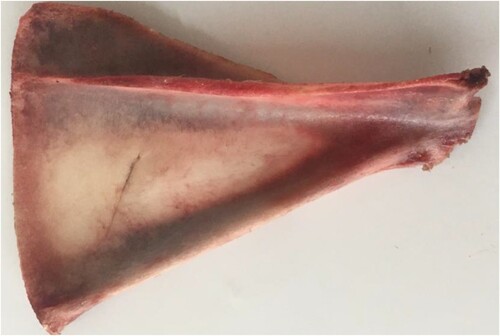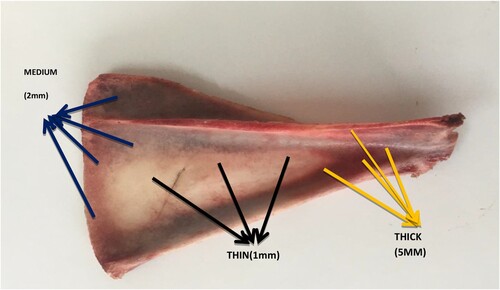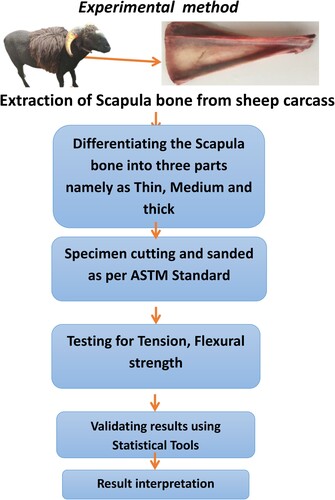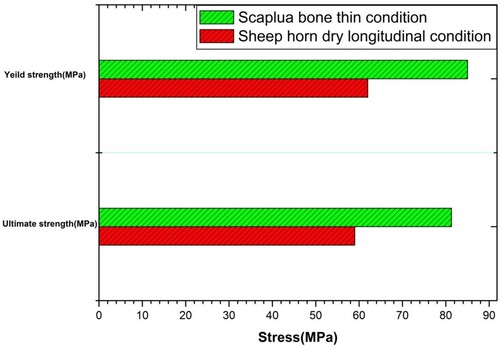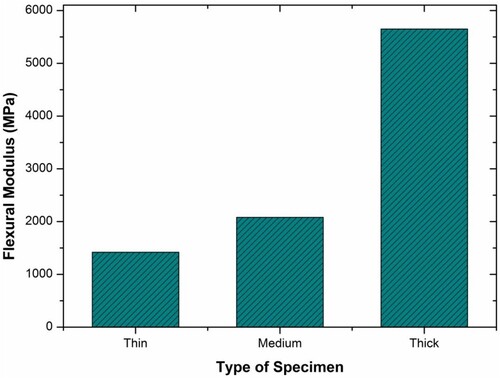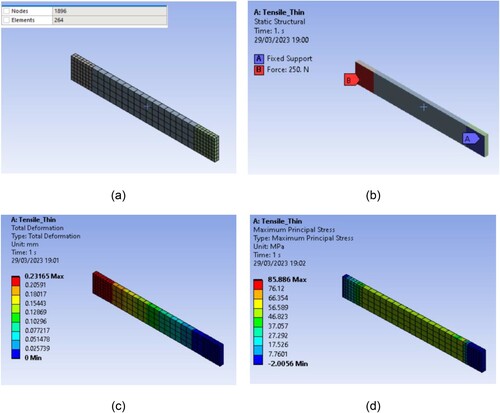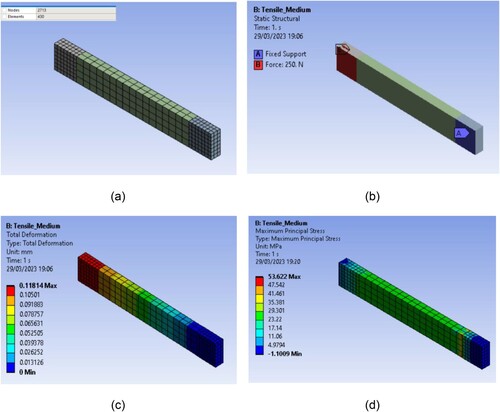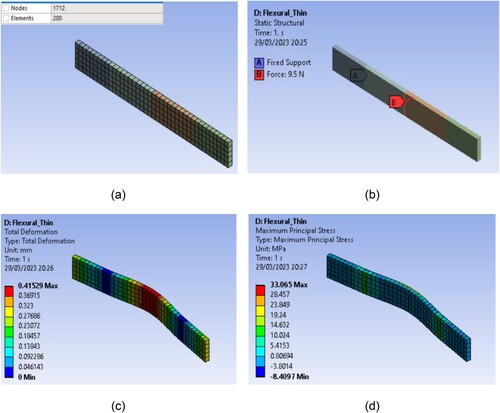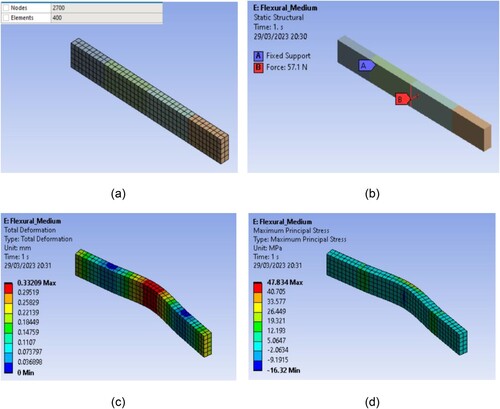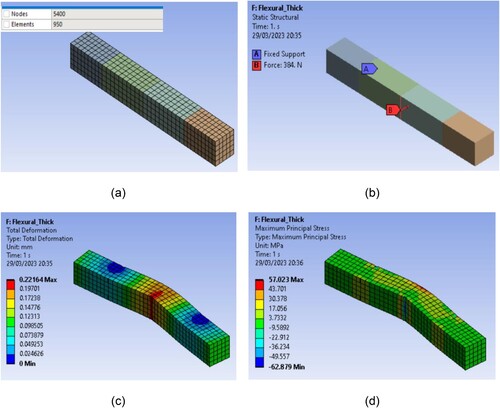Figures & data
Table 1. Composition of scapula bone available on earth with various animals.
Table 2. Mechanical and physical properties of scapula bone in various available sources.
Table 3. Material properties of scapula bone with varied thickness.
Table 4. One-way ANOVA results on the tensile properties of Deccani sheep scapula bone.
Figure 9. Maximum flexural strength for thin, medium and thick condition specimens by three-point bend test.
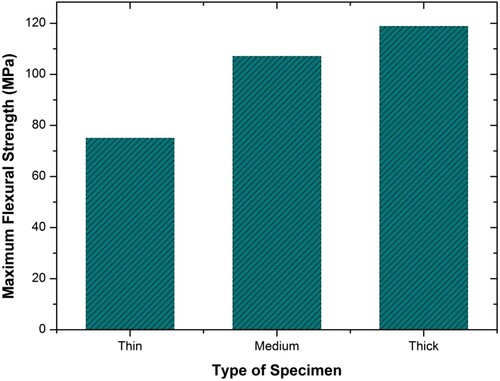
Table 5. Flexural properties of Deccani sheep scapula bone.
Table 6. One-way ANOVA results on the flexural properties of scapula bone of Deccani breed sheep.
Table 7. Comparative data with tensile and flexural strength.

